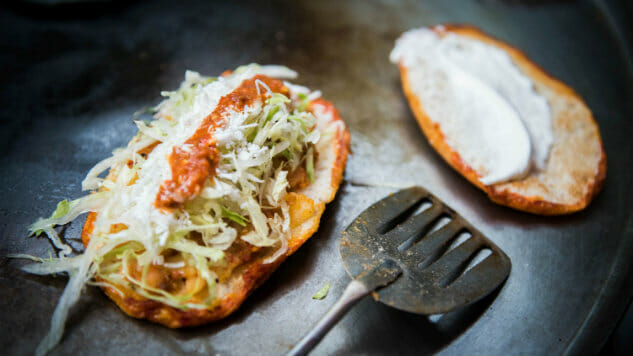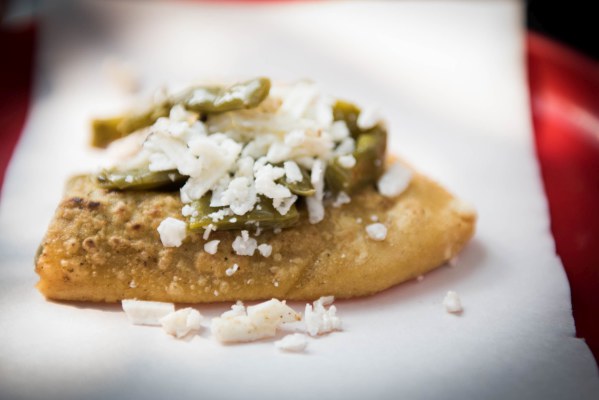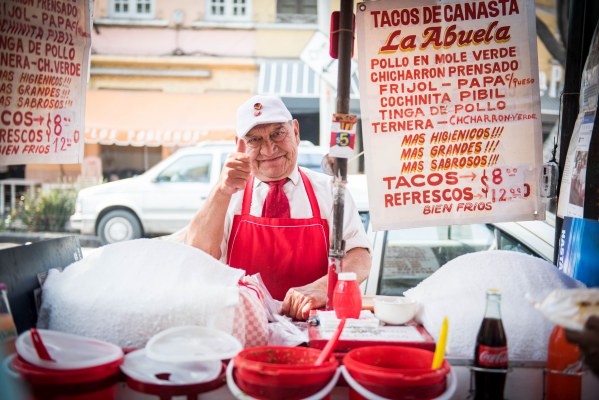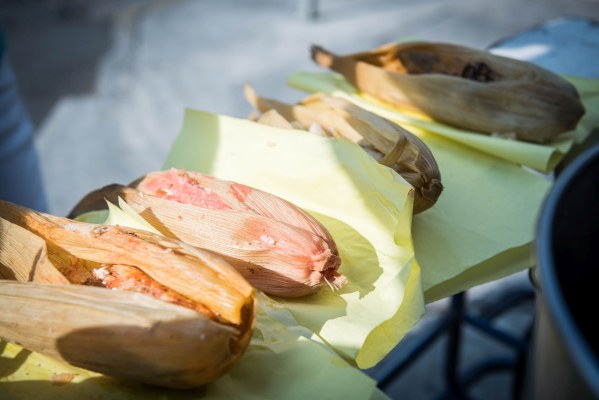Wandering a Delicious Path with Eat Mexico’s Street Food Tour
Photos courtesy of Eat Mexico
My day is behind already, and it’s not even 9 a.m. I’ve made the mistake of thinking that Uber in Mexico City will get me to my Eat Mexico street food tour faster than the metro. CDMX traffic, however, is a juggernaut of doom.
It might have been faster to jog in a leisurely fashion from my friends’ house in Navarte, clutching my notebook and phone. I’m desperately Whatsapping and texting my Eat Mexico tour guide, Paco, in the hopes that the group won’t leave without me.
But when I get to the destination, a Sanborns department store on Paseo de la Reforma in Cuauhtémoc, our maestro Paco is as chill as can be. He and the other members of the tour, who are perhaps a bit more peeved than he at my 20-minute lateness, are drinking bottled waters in the shade of what is becoming a beautiful, but hot — as always — Mexico City day.
Eat Mexico is a vibrant tour company that has been leading Mexico City food tours since 2010, when it was founded by Lesley Tellez and Jesica Lopez Sol. Owner Tellez, a food writer, is a third-generation Mexican-American who splits her time between Mexico City and New York. A passionate student of Mexican food and a graduate of the Escuela de Gastronomía Mexicana, Tellez recently penned a cookbook called Eat Mexico, which features recipe delights of the bustling city.
Our tour starts out with a tiny speed bump that turns into a joy ride. Because one of the favored street vendors had disappeared, Paco has to improvise. He chooses to start our morning tour not with street food but with the next best thing: hot, crispy, sugary churros and hot chocolate from Churreria El Moro.
As our group of Australians, Kiwis and Americans breaks the ice with travel stories, some of us perch ourselves outside the show window to shoot video of the captivating process of making the churros. These miraculous little pieces of heaven start as long strings of dough squeezed into hot oil. Then, the chef twirls them into round circles of dough and fries them together. They are cut up into curved pieces, and coated in sugar. Paired with dipping sauces of caramel, chocolate or condensed milk and downed with a malted milkshake or a hot chocolate (choices include Spanish, Mexican, French or Swiss), this is a warm and decadent breakfast.

Paco tells us he has been leading tours with Eat Mexico for many years, and that we’re in for quite a treat that day with the markets, tortillerias and food carts. Our very first stop, a small, modest market devoid of tourists, shows us that Mexico City is a land of starkly poetic contrasts. A few stalls down from a flower vendor selling perfectly geometrical, brightly-colored arrangements is a flank of chicken butchers carving up dozens of bloody fowl to send out to the city’s kitchens. In the market, chicharrones and carnitas abound directly next to stalls overflowing with mangoes and plantains. Every stall owner seems to know one another, and by 10 a.m. business is booming. We drool over pollo rostizado and Paco knowledgeably explains the different mangoes to us so that we can select a few to purchase.

We proceed to what Paco says is one of the best tortillerias, a long, skinny hole-in-the-wall joint where the senora obviously knows Paco, and rewards us with hot, fresh tortillas straight from the machine. We gobble them down in wonder. For some of us, this is the first time tasting tortillas that are not from a grocery store package. They are so intensely fragrant with corn and delightfully warm to touch that I ask for another, and devour it gratefully. If all tacos had tortillas like this, I’d never eat anything else for breakfast, lunch or dinner.
We are led into the tortilleria, where we get to see the tortilla-making process firsthand, and it is fascinating watching masa dough be fed into the machine and pressed out. The heat is a tsunami wave, and I marvel at the strength of the few workers to handle the heat and repetition for so many hours.
-

-

-

-

-

-

-

-

-

-

-

-

-

-

-

-

-

-

-

-

-

-

-

-

-

-

-

-

-

-

-

-

-

-

-

-

-

-

-

-












































